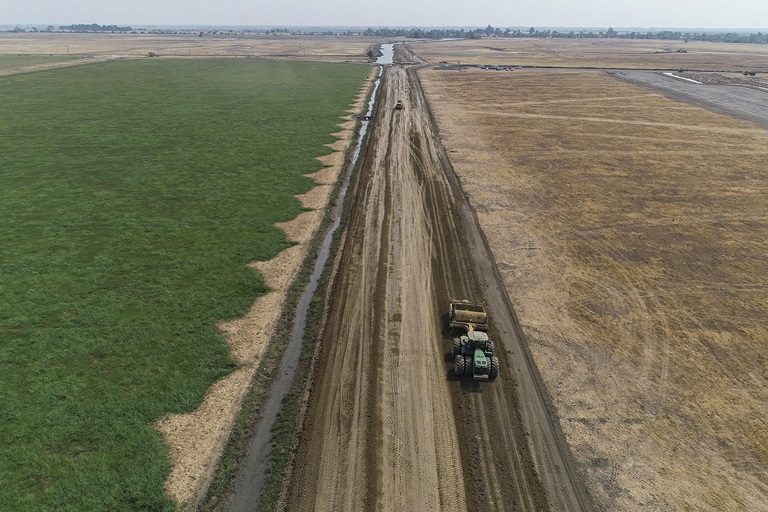Multi-Agency Collaboration Restores Critical Habitat for Endangered Delta Smelt, Other Native Species
View of construction on Lower Yolo Ranch Tidal Habitat Restoration Project. DWR/2021
Native fish, including smelt and salmon, in the southern Yolo Bypass in Yolo County have new sources of food and shelter thanks to a project that successfully restored more than 1,600 acres of former cattle pasture.
The Lower Yolo Ranch Tidal Restoration Project is a collaboration between multiple agencies including the Department of Water Resources (DWR) and Westlands Water District (Westlands) which serves western Fresno and Kings counties. The agencies are working together to meet a portion of state and federal requirements to restore 8,000 acres of tidal wetland habitat in the Sacramento-San Joaquin Delta.
“As advocates of California’s natural resources, we want to be good stewards of the environment with the work that we do,” said Ted Craddock, DWR Deputy Director of the State Water Project. “As we move water through the Delta, it's very important that we also protect the native species that live there.”
The project, which is a multi-agency effort between DWR, Westlands, Department of Fish and Wildlife, U.S. Bureau of Reclamation, U.S. Fish and Wildlife Service, and National Marine Fisheries Service, has been in the works for 13 years and restores a total of 1,682 acres of tidal marsh.
The project site located in the southern part of the Yolo Bypass is owned by Westlands. Westlands plans to transfer long-term ownership of the site to DWR upon final crediting approval. DWR and its partner, the California Department of Fish and Wildlife, will ensure long-term land management and will monitor habitat establishment and performance.
“Westlands purchased this property in 2007 because it was identified as an ideal site for tidal marsh habitat restoration,” said Tom Birmingham, Westlands’ general manager. “This is just one in a series of projects that are being conducted in the Yolo Bypass that will create a large contiguous habitat area which will contribute to the recovery of native species.”
The Yolo Bypass, when flooded, is a critical part of the state’s flood control system, becoming one of the largest seasonal floodplains in the Delta, and a migration corridor for dozens of native fish species.
The project will restore the local habitat to not only benefit Delta smelt and Chinook salmon, but also land-based threatened species such as the Swainson's Hawk and Giant Garter Snake.
The tidal wetland restoration includes new tidal channels, berm breaches, new tide gates, new diversion structures, a relocated lift pump structure, new drainage ditches, and integration with irrigated agriculture. Project restoration will have no impacts on levees or flood protection abilities of the bypass.
The project is part of the California EcoRestore initiative to restore at least 30,000-acres of critically needed habitat in the Delta, Yolo Bypass and Suisun Marsh. This effort is funded by DWR’s Fish Restoration Program to support long term operations of the State Water Project and federal Central Valley Project.
The Lower Yolo Ranch restoration effort will provide approximately 1,700 acres for Delta Smelt, 1,800 acres of salmonid rearing habitat, and 1,200 acres of Swainson’s Hawk habitat and an agricultural easement (on Westlands Water District retained lands).
For more information on restoration projects, please visit California EcoRestore.
